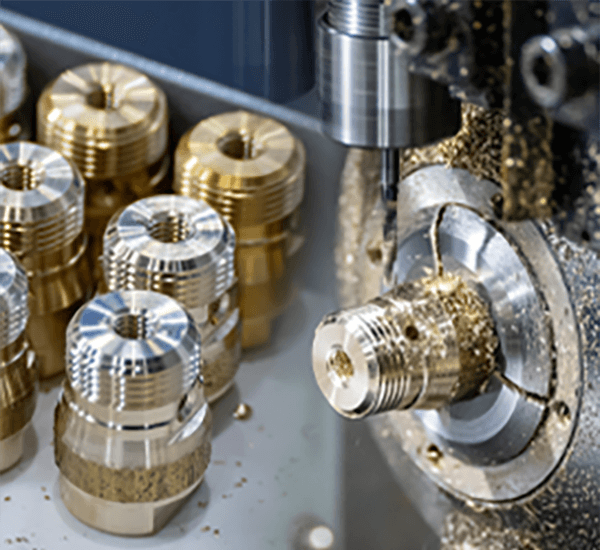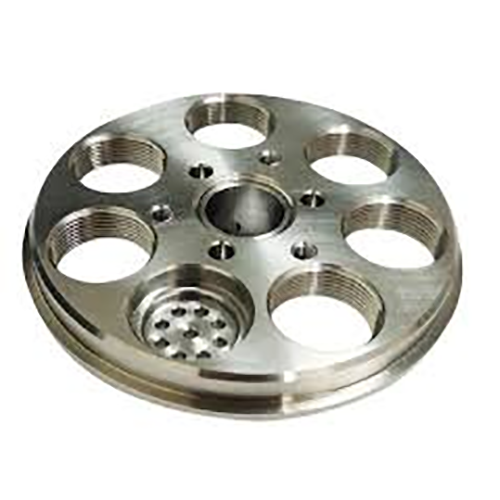
Attaining target exterior polish for a CNC part is highly significant.
- Drawing callouts communicate precise surface requirements for machined parts
- Drawings commonly cite Ra, meaning root mean square average, to measure texture
- Interpreting finish callouts is necessary to guarantee parts satisfy functional criteria
- Specified roughness affects lubricant distribution, frictional performance, and durability
- It is essential to interpret the specific callout to achieve the desired outcome
CNC Machining — Precision Engineering Explained

Programmed machining operates as a leading production process via numerical control software the system carves sophisticated geometries with precision.
- Automated machining allows fabrication of accurate parts from multiple materials
- CNC adaptability suits industries including aerospace and automotive sectors
- CNC processes produce uniform parts with high repeatability over runs
Across R&D to production scale-up CNC machining drives manufacturing evolution
Interpreting CNC Specifications
Reading machine specs may appear overwhelming initially
In contrast, measured learning and order help you traverse technical specifications
Open by noting essential values: spindle speed, feeds, accuracy, envelope, control type
All these parameters affect the tool’s total functional output.
To illustrate, faster spindle rotation fits soft materials and quicker feed improves production rates.
Understanding these relationships will allow you to select the right CNC machine to match your specific requirements
Always examine producer technical literature in detail.
Provided manuals commonly contain clarifying information and define jargon
Comprehensive Guide to CNC Machinery
G-code driven machining centers are computer-run systems for precise automated production of varied materials They function by reading numerical G-code commands that drive cutting heads and actuators.
- Some types of CNC machines include milling machines lathes routers and plasma cutters
- Cutting methods suit steels, plastics, woods, and layered composites
- In addition these machines facilitate quick prototyping and short-run manufacturing for startups and labs
CNC Basics and Explanations
They demonstrate convergence of tight hardware tolerances and refined software control Multifunctional systems use programming logic to fabricate both simple pieces and composite assemblies Essential concept transposes digital designs into manufactured reality.
- Automated machine operation
- Code-driven production workflow
It performs sequenced precise axis operations dictated by program Technicians are essential for choosing cutting settings, supervising processes, and validating final quality.
Impact of Surface Finish on CNC Machining
Attaining target texture in CNC processes is critical It greatly affects the final product's performance as well as its aesthetics Stock properties, cutting settings, and finishing operations determine surface result.
A polished finish improves wear resistance whereas coarse texture can hinder performance Code-driven machining enables selective tooling and techniques to attain required textures.
- Such as employing varied cutter geometries |tool materials|spindle rpm choices to produce target surface
- In addition buffing, grinding, and sanding may be applied to upgrade finishes
Understanding parameter influences helps attain the desired surface quality.
CNC Fundamentals: Operations and Uses
Programmed machining provides accurate part shaping across multiple material types They process digital commands to produce elaborate components repeatedly Familiarity with programming, tooling, and machine operation is key to process success
CNC serves diverse fields including aerospace, automotive, manufacturing, and electronics From intricate propeller parts to exacting mold inserts, CNC produces accurate geometries
Surface Finish Standards for CNC Machining
Exact finish callout is important for CNC component manufacturing It secures that the final item meets both functionality and looks Manufacturers often rely on Ra (roughness average) to represent surface finish This numerical value expressed in micrometers inches or millimeters indicates the average height of surface irregularities.
Factor in desired smoothness and the component’s functional purpose when setting finish callouts

Generally fine finishes benefit components requiring precision alignment and tolerance
Conversely a rougher surface finish could be appropriate for applications where grip friction traction is important
Include unambiguous roughness values in drawings to specify finish demands Document the Ra value and enumerate any extra finishing or treatment instructions.
Observe that unambiguous finish specifications are vital for manufacturing outcomes
Kinds of CNC Machines and Their Strengths
The world of CNC machining is vast and diverse with a wide array of machines designed to tackle various types of tasks They leverage CAD/CAM designs to instruct cutters for accurate and efficient fabrication.
- Milling machines are renowned for their ability to remove material from a workpiece shaping it into complex geometries
- Routers carve wood composite and plastics into detailed shapes and profiles
- Plasma cutters employ ionized gas arcs to sever metal quickly and accurately
Choosing the right CNC depends on production goals material type and required accuracy Each type of CNC machine offers unique capabilities making them essential tools in diverse industries from automotive to aerospace.
Achieving Premium Surface Results in CNC Processes
Securing excellent surface finish plays a key role in production and CNC methods enable that outcome Through tailored feed rates spindle selection and tool design engineers control surface formation and limit imperfections Furthermore the utilization of high-quality tooling materials and proper lubrication techniques contributes to a smoother finish Appropriate strategy choice combined with accurate setup produces excellent surface outcomes.
Obtaining Surface Quality via CNC Code
Achieving intended surface characteristics through programming is vital for quality Machining parameter combos such as feed, rpm, and tool geometry set the surface characteristics Conscientious parameter tuning with sound coolant strategy produces excellent surface quality.
- Moreover scheduled tool maintenance and inspection preserve surface performance Plus what does mean cnc regular inspection and maintenance of tools copyright finishing standards Besides that systematic tool upkeep and monitoring ensure sustained surface quality
- To optimize surface finish programmers should consider factors like material type desired surface roughness and the application requirements
- Employing simulation software can help visualize and fine-tune cutting parameters before machining reducing the risk of surface defects
- Continuous tool maintenance and oversight preserve high finish consistency
